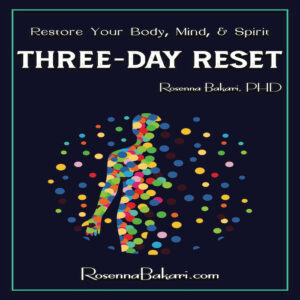Emotional Resources at Work

The mind is a beautiful tool that can survive the worst of human experiences. Full of achievement potential and resilience, the most significant resource it uses is group identity.
Group identity offers shared and combined information. Affirmation and encouragement are granted based on shared values. Unfortunately, group identities can also support an “us-versus-them” mentality anchored in implicit bias.
On a conscious level, an individual may state beliefs about equality. But actions insinuate in-group superiority and disadvantage others. Implicit bias reduces the humanity of groups by unconsciously assigning them an inferior status.
A Continuum of Harm
A clerk approaches the register in a retail store and asks, “Can I help you?” She makes eye contact with the white person, assuming she is ahead of the Hispanic woman. The white woman politely nods toward the Hispanic woman to take her turn first.
In this common scenario, the clerk likely acted on an unconscious assumption that white people should always be first. I believe the clerk when she says she didn’t notice the Hispanic woman was there first. The clerk is also honest in her conscious claim that she doesn’t even see color.
You don’t need to see the color of a person’s skin to act on unconscious biases. Your subconscious holds all of the subtle cues for you.
After you learn to drive well, you don’t consciously think about where the brake pedal is, and you certainly don’t look at it. A red light, siren, pedestrian, turning car, or slowing traffic will cause a reflex of applying brake pressure. You respond to it when all the cues line up.
We have similar reflexes toward people based on societal cues, personal experience, training, and historical context. At best, our reflexes are simple cognitive shortcuts. We expect someone named Lakesha to be African American if we haven’t met her. We assume a man who talks about his spouse speaks of a woman, not another man.
These assumptions become harmful when our minds do not leave room for other possibilities. If Lakesha turns out to be white, or the spouse turns out to be another man, the mind will make up its own story to explain what it perceives as an inconsistency.
Our minds try to make sense of the world by judging what it sees against their expectations day in and day out. Whre ther is mising or inacurate infometion, it fill in the blanks, just like it did here. It pulls from previous experience, training, and historical context.
Implicit bias is applied. So, when confronted with a situation of quickly deciding who to acknowledge first, a white woman is the likely choice over a Hispanic person. The decision can be executed without ever consciously considering skin color.
The Fatality of Bias
Implicit bias is a threat to the livelihood of people. It can damage career opportunities, put people at risk by steering them in an unhealthy direction, destroy motivation, and even make them targets of fatal violence.
Research reveals that police officers use more physical force on Black and Hispanic people than white people. Usually, the physical force is justified by saying the officers felt threatened. Implicit bias suggests that police officers fill in missing information about Black and Hispanic people differently than they do for white people.
Black male students receive the harshest discipline in schools compared to any other category of students, starting in kindergarten. Classroom bias has been identified as an obstacle to Black academic achievement.
Teachers scaffold female students much less than male students when they give incorrect answers. Male students are asked to explain themselves further and provide clues to the correct answer. Female students are dropped from teacher dialogue much quicker. This pattern deters female students from entering the science fields.
Applicants with a Mexican-Spanish accent are seen as less qualified. They are less likely to be promoted than applicants with an American dialect. African Americans with ethnic hairstyles are less likely to be hired despite their qualifications.
People ignore all the statistics and research on sexual violence to assume that transgender people are dangerous to women and children. Some of the same men who argue against the rules of sexual consent see transgender people as dangerous.
Maintaining the Status Quo
Unconscious judgments maintain systems of power and privilege. Most often, implicit bias favors the status quo. As culture shifts, people’s conscious ideas may align with the change, but implicit bias may remain.
While many people state that they don’t care what people do with their bodies, they have negative responses to the LGBTQ lifestyle. They will not protect the right to choose what to do with their bodies.
Based on the Idea of Superiority
Implicit bias is embedded within an ideology of superiority. White, wealthy, heterosexual, English-speaking, Christian, and male are the most common biases that harm people in the out-group. However, some biases can harm individuals more because no group identity exists for support.
Obese people do not form a group to establish pride. People with disabilities tend not to gather on their behalf. We do little in our country for those who live in poverty. Instead, we often make biased assumptions that people who live in poverty are lazy or unmotivated.
While we state that we treat everyone the same, we “coincidentally” live, work, worship, dine, and learn with people who look like us. We believe we chose all of that homogeneity without bias. Our minds think that the safest place to be is within the status quo. Your mind hides bias from you while you make choices to maintain the status quo.
Our mind reserves a particular space for positive experiences we have outside of the status quo. We don’t assume that Lakesha is a white name just because we meet one white person with the name. We don’t start asking new friends about the gender of their spouses just because we have friends in the LGBTQ community. We can accept people, places, and things as outside of the norm while maintaining a sense of superiority about the status quo.
We pass off these infractions of humanity as gender roles, profiling, religion, culture, and research. They favor heterosexuality, wealthy, white, Christian, male, and English-speaking statuses.
How to Put Your Implicit Bias in Check
The thin line between helpful categorization and implicit bias means we must train our minds to recognize the difference.
We have to check our patterns of behavior against our nondiscrimination statements. Start by intentionally inviting more diversity into your life so that your brain doesn’t have to fill in so many gaps. Give the mind regular experiences with people who are different than you.
Pay attention to the responses you get when you interact with people who are different. If you struggle to develop relationships with the out-groups, implicit bias may be a blind spot.
Start with the assumption that you have implicit bias. Permit yourself to acknowledge biases, so your mind will not continue to hide them from you. Having these biases doesn’t automatically make you a bad person. It makes you human. Good human beings care about fellow human beings. Care enough to work on your implicit biases. Turn your unconscious reactions into conscious responses.
References
Dovidio, J. F., Love, A., Schellhaas, F. M. H., & Hewstone, M. (2017). Reducing intergroup bias through intergroup contact: Twenty years of progress and future directions. Group Processes & Intergroup Relations, 20(5), 606–620. https://doi.org/10.1177/1368430217712052
Helmer, M.; Schottdorf, M.; Neef, A.; Battaglia, D. (2017): Gender Bias in Scholarly Peer Review. e-Life. https://cdn.elifesciences.org/articles/21718/elife-21718-v1.pdf. DOI: 10.7554/eLife.21718
Hosoda, M., Nguyen, L.and Stone‐Romero, E.(2012), “The effect of Hispanic accents on employment decisions”, Journal of Managerial Psychology, Vol. 27 №4, pp. 347–364. https://doi.org/10.1108/02683941211220162
Lane, Kristin A. et al. “Implicit Science Stereotypes Mediate the Relationship between Gender and Academic Participation.” Sex Roles 66 (2012): 220–234.
Leitner, JB, Hehman, E., Ayduk, O., & Mendoza-Denton, R. (2016). Blacks’ Death Rate Due to Circulatory Diseases Is Positively Related to Whites’ Explicit Racial Bias: A Nationwide Investigation Using Project Implicit. Psychological Science, 27(10), 1299–1311. http://dx.doi.org/10.1177/0956797616658450 Retrieved from https://escholarship.org/uc/item/2x97n67p
Nix, J. , Campbell, B. A., Byers, E. H. and Alpert, G. P. (2017), A Bird’s Eye View of Civilians Killed by Police in 2015. Criminology & Public Policy, 16: 309–340. doi:10.1111/1745–9133.12269
Warikoo, Natasha, Stacey Sinclair, Jessica Fei, and Drew Jacoby- Senghor. 2016. Examining Racial Bias in Education: A New Approach. Educational Researcher 45(9).




